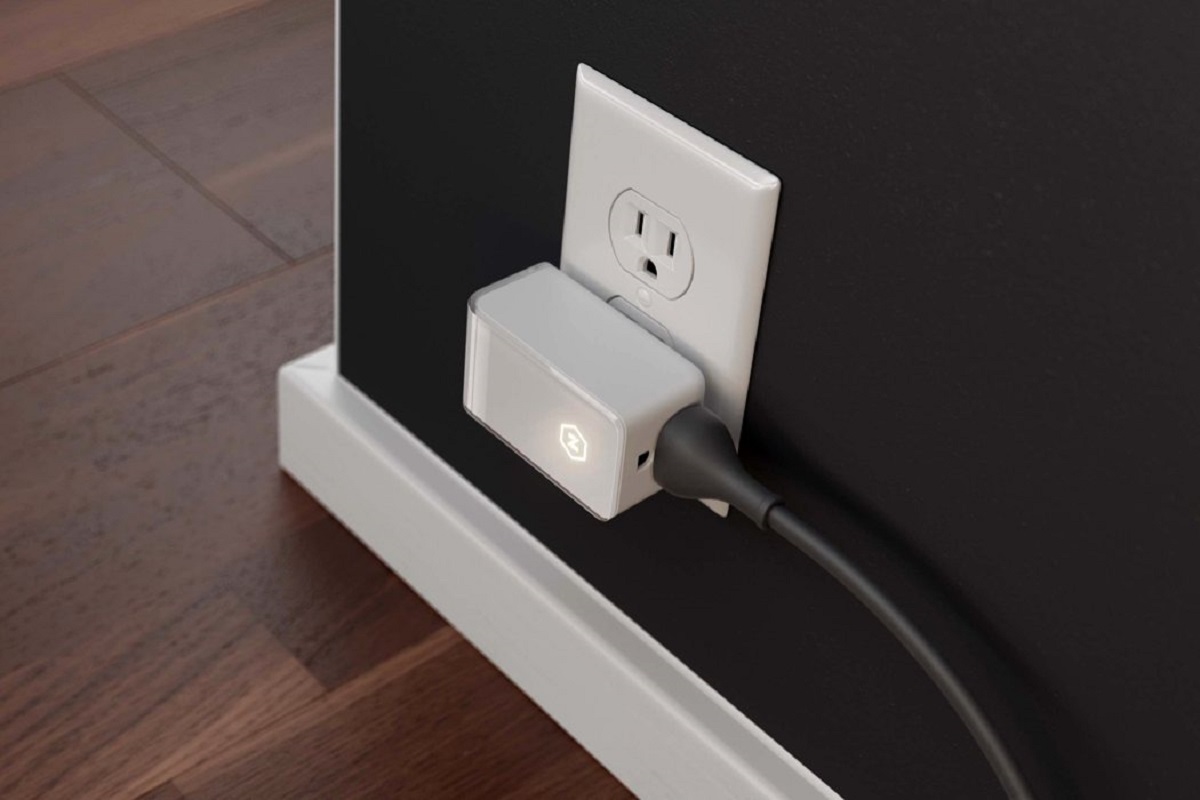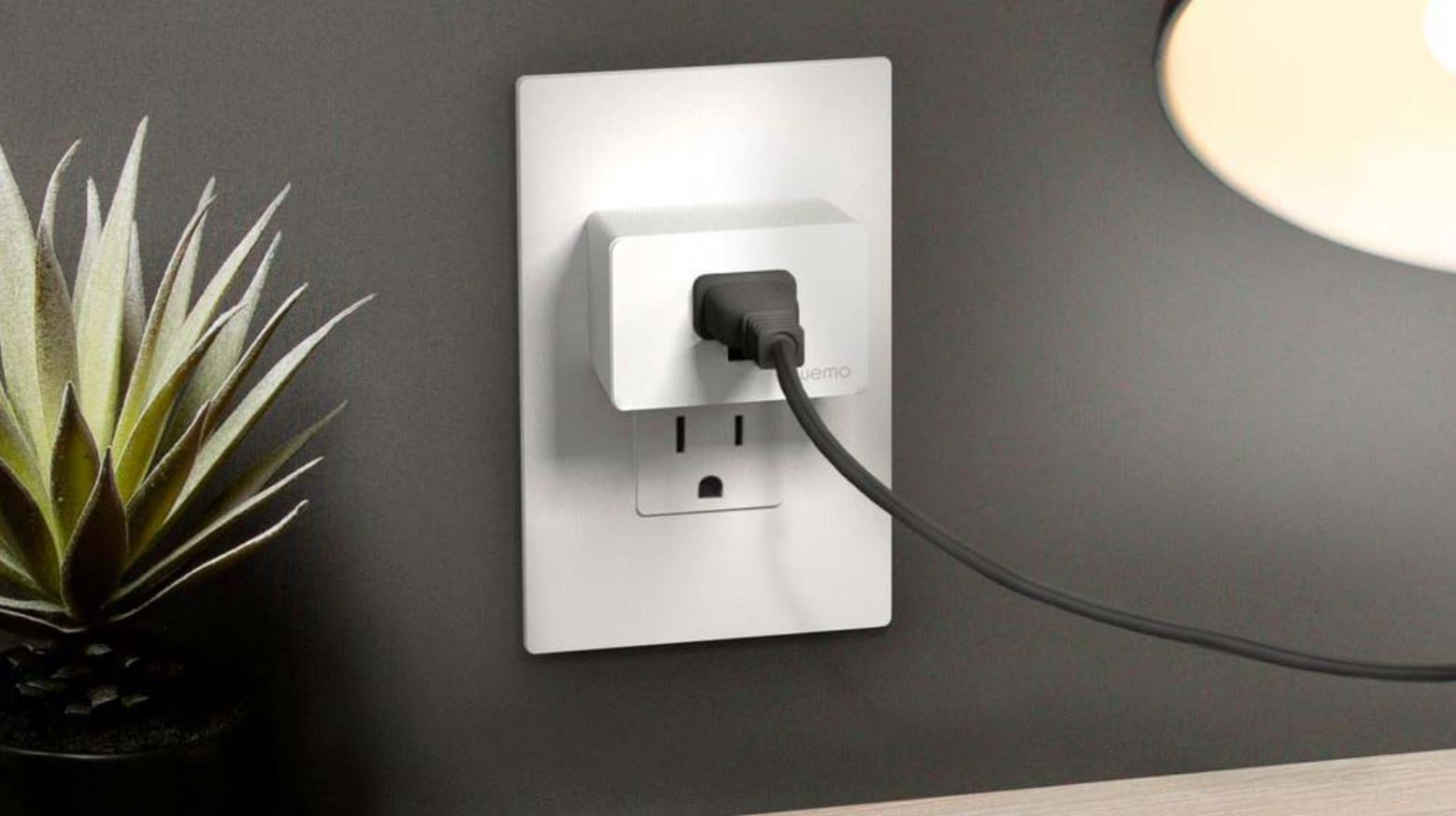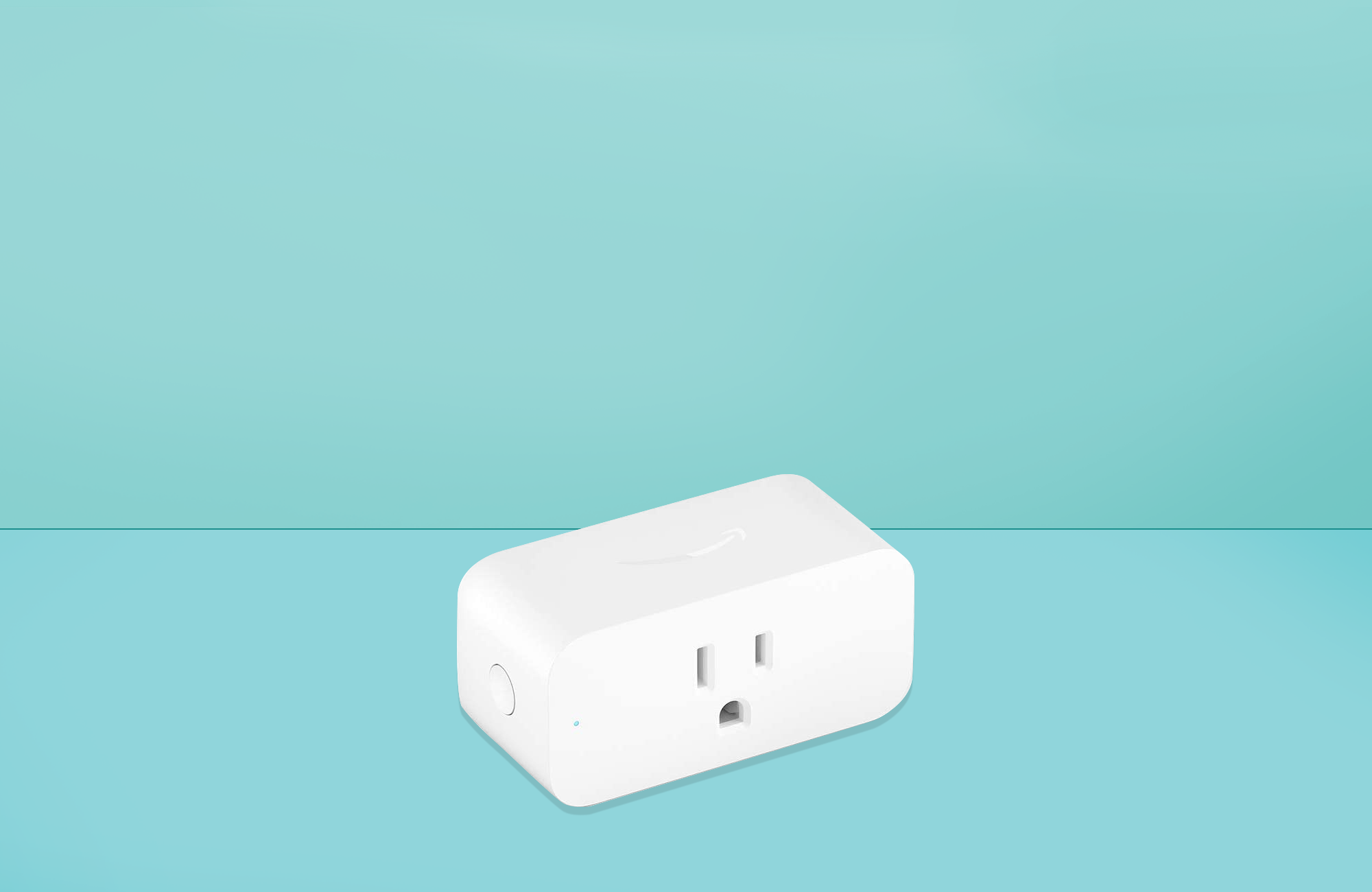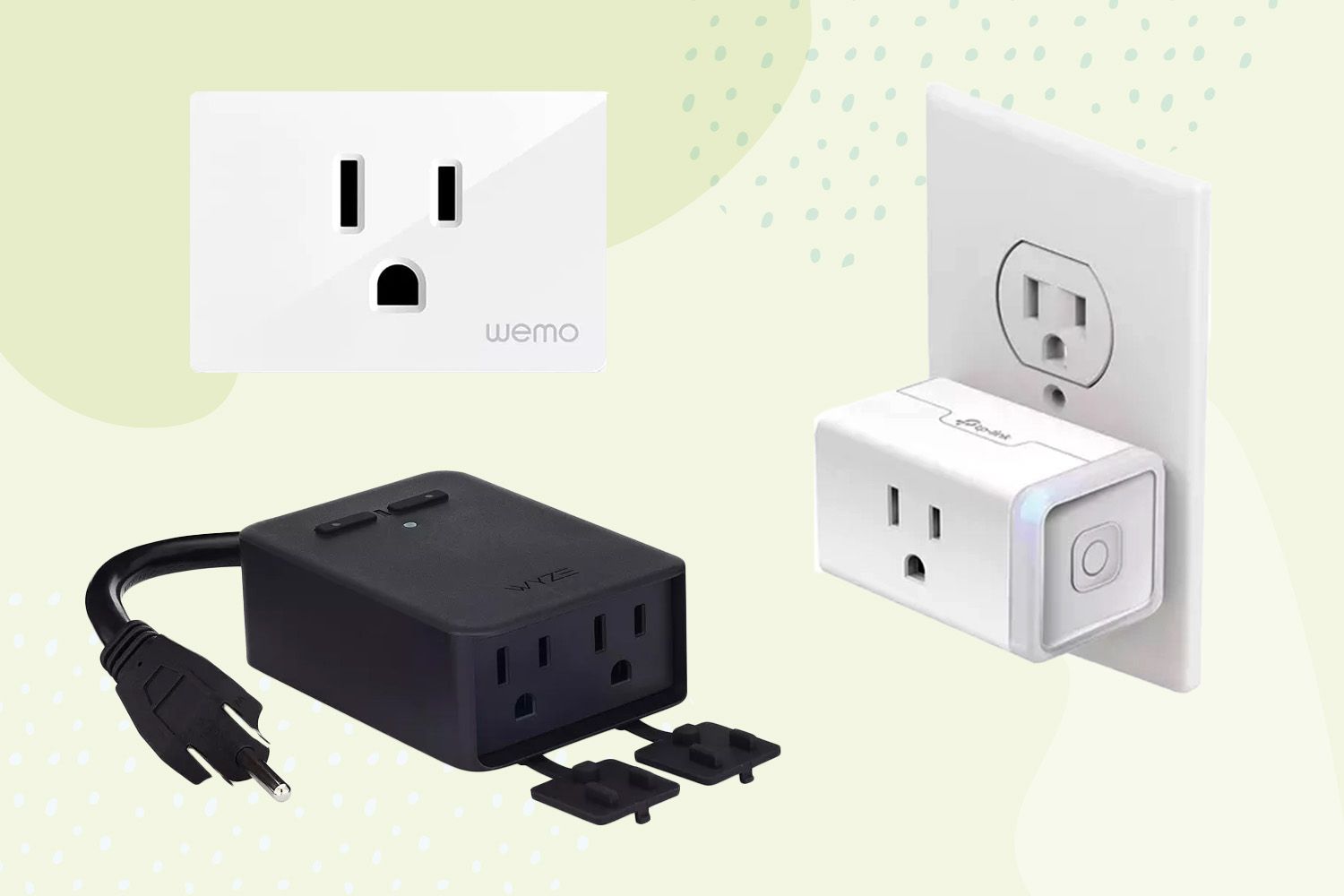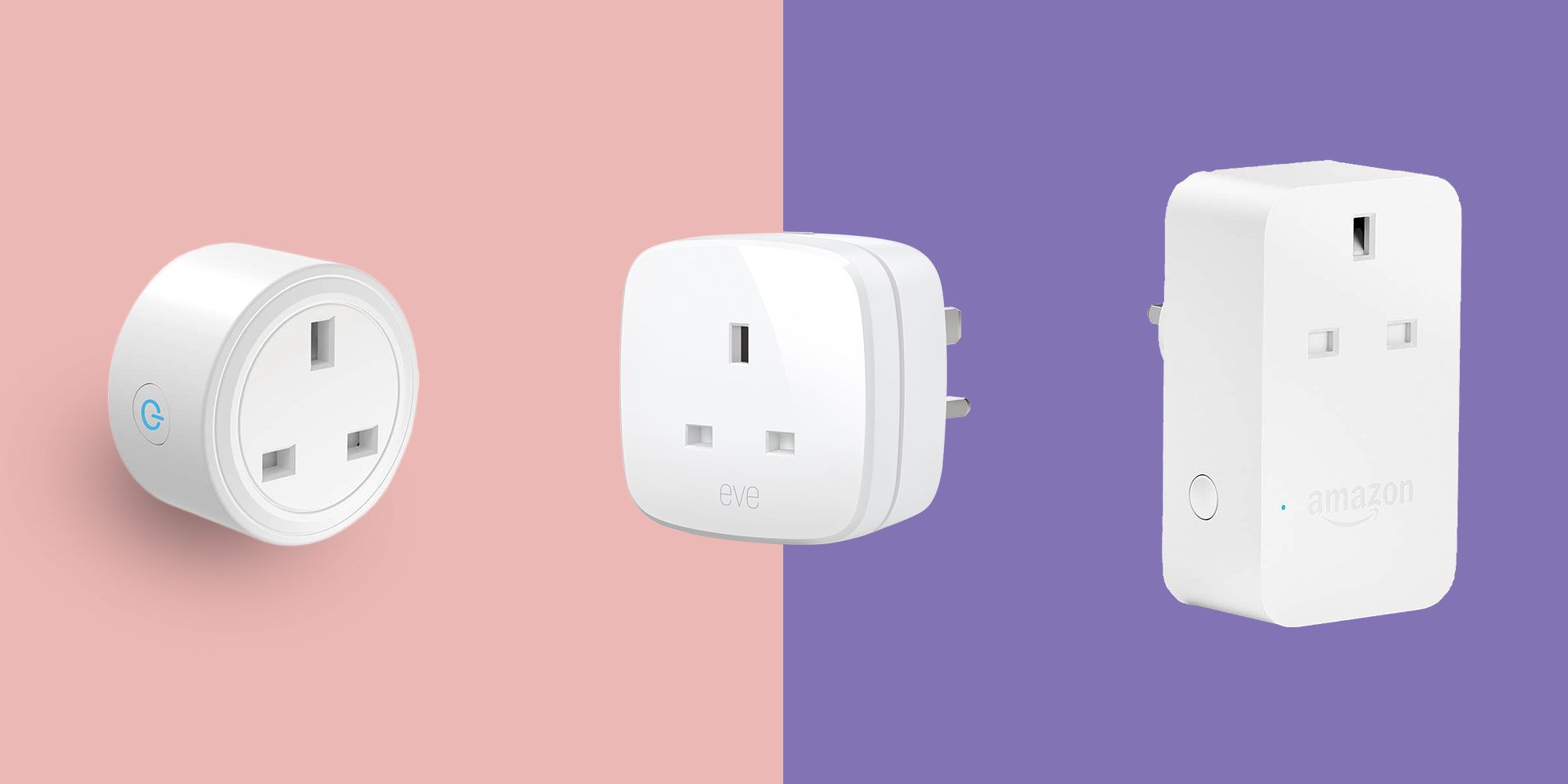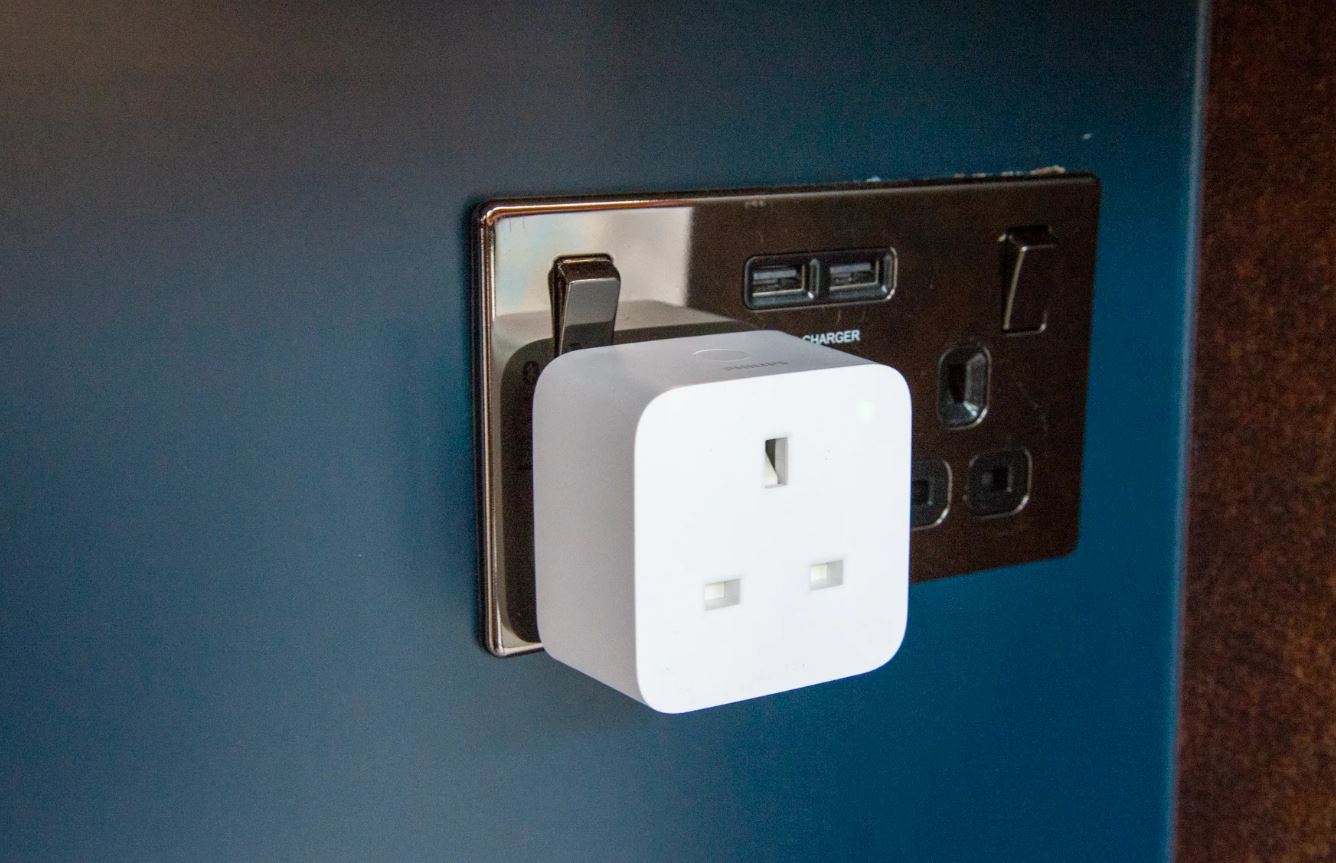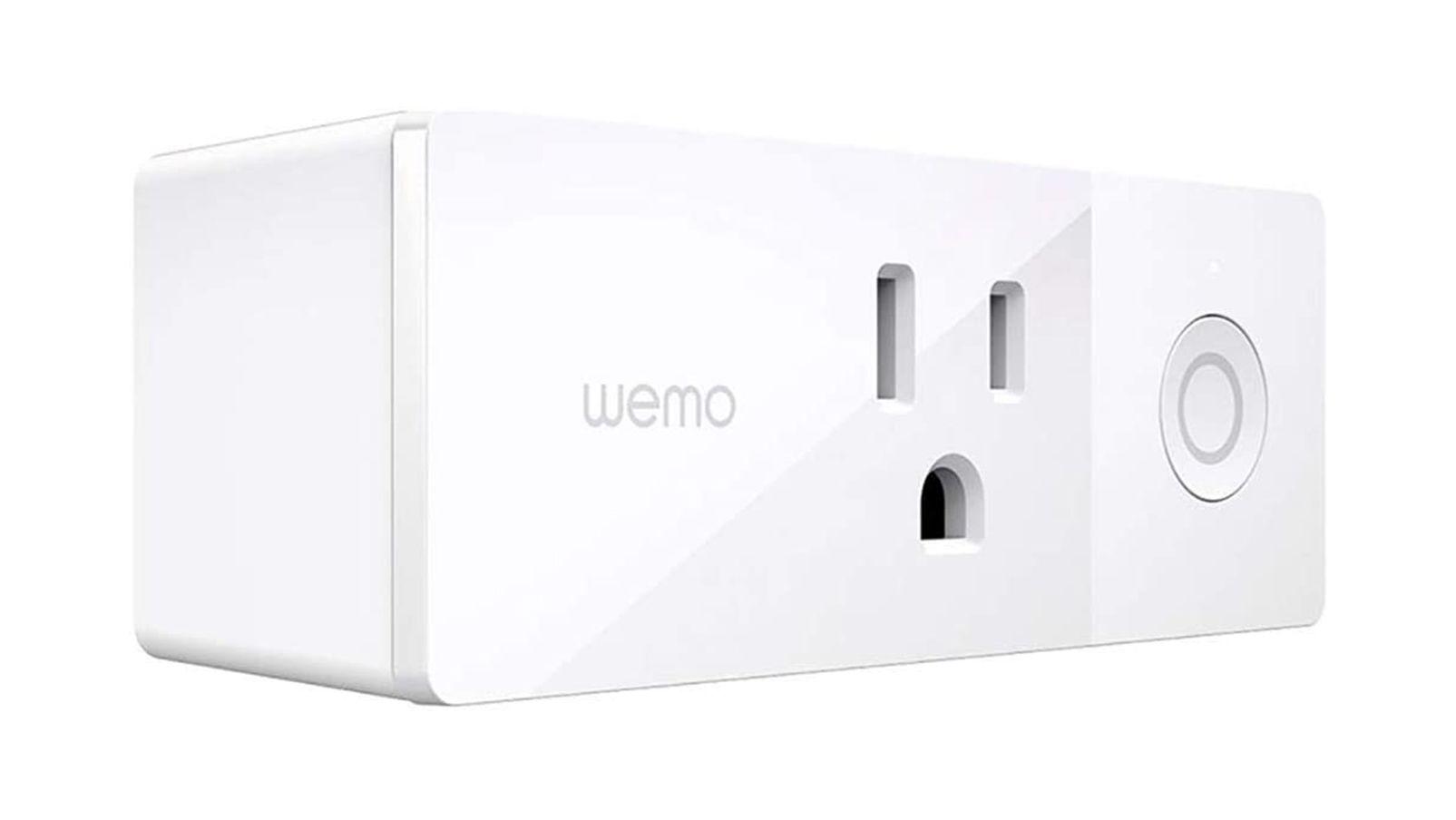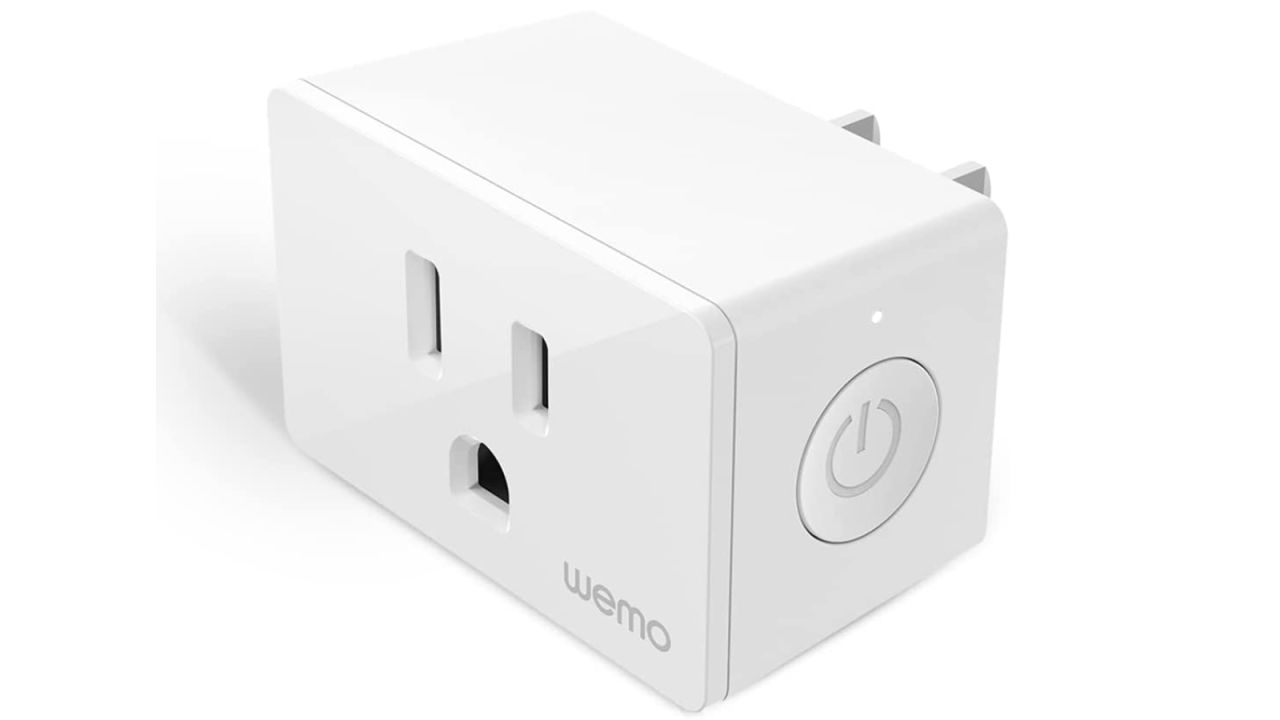Introduction
Welcome to the world of smart home technology, where everyday devices are getting smarter and more efficient. One such innovative gadget that has gained popularity in recent years is the smart plug. With its ability to transform traditional appliances into smart devices, the smart plug has revolutionized the way we interact with our homes.
A smart plug is a small device that plugs into an electrical outlet and allows you to control any connected device using your smartphone or voice assistant. It provides a seamless connection between your home’s electrical system and the digital world, giving you the power to automate and control your devices from anywhere in the world.
Whether you are at home or on the go, a smart plug gives you the convenience and flexibility to manage your devices with ease. From turning on the lights before you arrive home to scheduling your coffee maker to start brewing in the morning, a smart plug offers a wide range of possibilities to enhance your daily routines.
In this article, we will explore the exciting capabilities of smart plugs, how they work, and the benefits they bring to your home. We will also delve into the compatibility with voice assistants, energy monitoring features, remote control capabilities, and safety measures that make smart plugs a must-have addition to your smart home ecosystem.
So, let’s dive in and discover the world of smart plugs and how they can transform your home into a smarter and more efficient space.
What is a Smart Plug?
A smart plug is a small device that enhances the functionality of traditional electrical outlets. It allows you to connect any electrical device to it and control its power supply remotely. Smart plugs are typically equipped with Wi-Fi connectivity, allowing them to connect to your home’s wireless network and be controlled through a smartphone app or voice command via a compatible virtual assistant.
With a smart plug, you can turn your regular appliances into smart devices, enabling convenient control and automation. From lamps and fans to coffee makers and air purifiers, almost any electrical device can be connected to a smart plug, empowering you to manage them effortlessly.
Once connected, you can control the power supply to your devices remotely, whether you are at home or away. This means you can turn devices on or off, set schedules, monitor energy consumption, and even receive notifications regarding device status, all from the convenience of your smartphone or voice-controlled device.
Smart plugs are designed to be user-friendly, and they typically come with an easy-to-use smartphone app. This app allows you to set up and control your smart plug effortlessly, either through a simple interface or advanced features depending on the brand and model.
Many smart plugs also offer additional features such as energy monitoring, which allows you to track the energy consumption of connected devices. This feature can help you become more aware of your electricity usage and make informed decisions to reduce energy consumption and lower your utility bills.
Furthermore, smart plugs can be integrated with other smart home devices and platforms, allowing you to create personalized automation scenarios. For example, you can set up a routine that turns on your lights and starts your coffee maker when your alarm goes off, creating a seamless and convenient morning routine.
In summary, a smart plug is a versatile device that provides an easy and affordable way to bring smart functionality to your existing electrical devices. With the ability to control, schedule, and monitor your devices remotely, smart plugs offer convenience, energy efficiency, and enhanced control over your home’s electrical devices.
How does a Smart Plug work?
A smart plug may seem like a simple device, but its functionality is based on sophisticated technology. Understanding how a smart plug works can help you make the most of its features and integrate it seamlessly into your smart home ecosystem.
The fundamental principle behind the operation of a smart plug is its ability to control the power supply to connected devices. It achieves this by acting as a bridge between the electrical outlet and the connected device, allowing you to remotely turn the power on or off.
Smart plugs typically connect to your home’s Wi-Fi network, enabling them to communicate with your smartphone or voice assistant. This connection allows you to control the smart plug and its connected devices through a designated app or voice commands.
When setting up a smart plug, you will typically connect it to your home’s Wi-Fi network using the manufacturer’s app. Once connected, you can assign a name or label to the smart plug and begin pairing it with the desired device. This process involves physically plugging the device into the smart plug and following the instructions provided by the app.
Once the smart plug and device are paired, you can control the device’s power supply using the app or voice commands. This can be done manually, by tapping on the app interface to turn the connected device on or off, or by setting up schedules and timers to automate its operation.
For example, you can program the smart plug to turn on a lamp at a specific time in the evening, creating the illusion of someone being home even when you’re away. You can also set a schedule for the coffee maker to start brewing in the morning, ensuring a freshly brewed cup of coffee awaits you as you wake up.
In addition to remote control, many smart plugs offer energy monitoring capabilities. This means they can measure and report the energy consumption of connected devices. You can view this information through the app, allowing you to keep track of your electricity usage and make informed decisions to optimize energy efficiency.
Overall, the operation of a smart plug is straightforward and intuitive. With its Wi-Fi connectivity and user-friendly app interface, controlling and automating your devices becomes convenient and efficient.
Benefits of using a Smart Plug
Using a smart plug offers numerous benefits that can enhance your daily life, improve energy efficiency, and create a more convenient and comfortable home environment. Let’s explore some of the key advantages of incorporating smart plugs into your smart home ecosystem:
- Convenient control: One of the primary benefits of using a smart plug is the convenience it offers. With remote control capabilities, you can easily turn devices on or off, adjust settings, and create schedules from anywhere using your smartphone or voice assistant. This eliminates the need to manually operate switches or manage devices individually.
- Energy savings: Smart plugs equipped with energy monitoring capabilities enable you to track the energy consumption of connected devices. This valuable insight allows you to identify energy-hungry appliances and take measures to reduce energy usage, ultimately leading to lower electricity bills and a greener, more sustainable home.
- Automation and scheduling: Smart plugs allow you to automate the operation of your devices. You can set up schedules and timers to turn devices on or off at specific times or in response to certain conditions. For instance, you can schedule your lights to turn on at sunset or have your coffee maker start brewing in the morning without lifting a finger.
- Enhanced home security: Smart plugs can contribute to improving home security. By setting up random schedules for lights or other devices, you can create the illusion of someone being home even when you’re away, deterring potential intruders. Additionally, with remote access, you can check the status of your devices and ensure everything is functioning normally, providing peace of mind.
- Voice control and compatibility: Many smart plugs are compatible with popular voice assistants such as Amazon Alexa, Google Assistant, or Apple HomeKit. This allows you to control your devices using simple voice commands, providing a seamless and hands-free experience. You can easily integrate smart plugs into your existing smart home ecosystem and control multiple devices simultaneously.
- Customized scenarios and routines: Smart plugs can be integrated with other smart home devices and platforms, allowing you to create customized automation scenarios. For instance, you can set up a routine that turns on the lights, starts your favorite music, and adjusts the thermostat when you arrive home. This level of customization enhances your home’s comfort and convenience.
- Remote access and monitoring: With a smart plug, you can access and control your devices remotely, providing flexibility and peace of mind. Whether you forgot to turn off an appliance or want to make sure your devices are functioning properly while you’re away, remote access allows you to stay connected and in control no matter where you are.
These are just a few of the many benefits that smart plugs offer. They provide convenience, energy efficiency, enhanced security, and personalized control over your smart home devices, making them an invaluable addition to any modern home.
Compatibility with Voice Assistants
One of the major advantages of using smart plugs is their compatibility with popular voice assistants such as Amazon Alexa, Google Assistant, or Apple HomeKit. This compatibility allows you to control your devices using simple voice commands, making your smart home experience even more seamless and convenient.
Voice assistants have become increasingly popular, offering hands-free control over a wide range of smart home devices. By integrating your smart plug with a voice assistant, you can control your devices with just your voice, eliminating the need for manual operation or smartphone interactions.
Setting up a smart plug with a voice assistant is typically a straightforward process. You will need to connect your smart plug to your home’s Wi-Fi network and pair it with the designated voice assistant through the manufacturer’s app or the voice assistant’s app.
Once the setup is complete, you can use voice commands to control your devices connected to the smart plug. For example, you can say, “Alexa, turn off the living room lamp,” or “Hey Google, turn on the coffee maker.” The voice assistant will relay the command to the smart plug, and the connected device will respond accordingly.
With voice control, you can operate multiple devices simultaneously or create customized routines. For instance, you can set up a routine that turns off all the devices in your home when you say, “Goodnight” to your voice assistant, providing a convenient way to manage your devices and prepare your home for bedtime.
Compatibility with voice assistants also allows for voice control of smart plugs when you’re away from home. With a supported voice assistant app on your smartphone, you can securely access and control your devices remotely, making it easy to turn on or off lights or other appliances while you’re on vacation or away for an extended period.
It’s important to note that the compatibility of a smart plug with voice assistants may vary depending on the specific brand and model. Before purchasing a smart plug, check its compatibility with your preferred voice assistant to ensure a seamless integration into your smart home ecosystem.
Whether you prefer Amazon Alexa, Google Assistant, or Apple HomeKit, the compatibility of smart plugs with voice assistants offers a level of convenience and control that takes your smart home experience to the next level. With simple voice commands, you can effortlessly manage your devices and create a truly hands-free smart living environment.
Energy Monitoring Capabilities
A notable feature of many smart plugs is their energy monitoring capabilities. By measuring and tracking the energy consumption of connected devices, smart plugs provide valuable insights that can help you optimize your energy usage and reduce your carbon footprint.
Energy monitoring features vary from one smart plug model to another, but the basic functionality involves collecting data on the power consumption of the devices connected to the plug. This data is then typically presented in the accompanying smartphone app, allowing you to easily access and interpret the information.
With energy monitoring, you can identify the devices in your home that consume the most energy. This information can help you make informed decisions on where to focus your energy-saving efforts. It may reveal surprising energy hogs that you were unaware of, such as appliances on standby mode or older devices that are inefficient.
Being aware of your energy usage patterns can also enable you to adjust your behaviors and create more energy-efficient habits. For example, if you notice that your energy consumption spikes during certain hours of the day, you can schedule devices to turn off during those periods or make a conscious effort to reduce unnecessary usage.
Smart plugs with energy monitoring can also provide real-time energy usage data. This means you can monitor the energy consumption of a particular device as it is being used. For example, you can see how much energy your air conditioner consumes while it is running, allowing you to gauge its efficiency and make adjustments if necessary.
In addition to real-time monitoring, some smart plugs allow for historical data tracking. This feature enables you to analyze and compare energy consumption trends over time. By reviewing the data, you can identify patterns and make adjustments to optimize energy usage.
Energy monitoring is not only beneficial for reducing your energy bills, but it also promotes environmental sustainability. By becoming more conscious of your energy consumption, you can actively contribute to reducing greenhouse gas emissions and preserving natural resources.
It’s important to note that not all smart plugs have energy monitoring capabilities. If energy monitoring is a feature you are interested in, ensure that the smart plug you choose specifically includes this functionality.
By incorporating smart plugs with energy monitoring into your smart home setup, you can gain valuable insights into your energy usage and take steps towards a more energy-efficient and environmentally-friendly lifestyle.
Remote Control and Scheduling
One of the most significant benefits of using a smart plug is the ability to remotely control your devices and create personalized schedules. This feature provides convenience and flexibility, allowing you to manage your connected devices from anywhere in the world using your smartphone or tablet.
With remote control functionality, you no longer have to worry about leaving devices powered on when you’re not at home. You can simply access the smart plug’s app and turn off the device with a tap of your finger. This not only provides peace of mind but also helps conserve energy and reduce electricity bills.
Remote control also allows you to turn on devices before you arrive home. Imagine being able to arrive to a well-lit home after a long day at work or having your coffee maker already brewing a fresh cup of coffee at your desired time. With a few taps on your smartphone, you can ensure a more comfortable and efficient home environment.
In addition to remote control, smart plugs offer powerful scheduling capabilities. You can create customized schedules for your devices, specifying when they should turn on or off automatically. This is especially useful for devices that have regular and predictable usage patterns, such as lamps, fans, and heaters.
For example, you could set a schedule for your bedroom lamp to turn on in the evening and turn off in the morning, simulating your presence even when you’re away. Similarly, you can schedule your air purifier to turn on during specific hours of the day to maintain clean and fresh air in your home.
Some smart plugs even allow for more advanced scheduling options. You can create recurring schedules for specific days of the week or randomize the schedules to give the appearance of a lived-in home when you’re away for an extended period.
Moreover, smart plugs can be integrated with other smart home devices or platforms, such as motion sensors or weather apps, to trigger actions based on specific conditions. For instance, you can set up a smart plug to turn on a fan when the temperature exceeds a certain threshold or have your porch lights automatically turn on when motion is detected at night.
Overall, the remote control and scheduling capabilities of smart plugs provide you with the convenience and flexibility to effectively manage your connected devices. Whether you want to control devices from afar or automate their operation based on schedules and conditions, smart plugs offer a seamless and personalized smart home experience.
Safety Features
When it comes to smart plugs, safety is a top priority. These devices are equipped with various safety features to ensure the protection of your home, devices, and family. Let’s take a look at some of the key safety features commonly found in smart plugs.
Overload Protection: Smart plugs are designed with built-in overload protection mechanisms. This means they can detect when a connected device is drawing excessive power and automatically shut off to prevent damage to the device or the smart plug itself. This feature provides peace of mind, especially when using high-power appliances like heaters or air conditioners.
Fire Prevention: Smart plugs often come with fire prevention features that monitor the temperature of the connected device or the plug itself. If excessive heat is detected, the smart plug will automatically cut off power to prevent overheating and reduce the risk of a fire hazard.
Safe Shutdown: In the event of a power outage, smart plugs are designed to handle the situation gracefully. They typically have a safe shutdown feature that ensures connected devices are properly powered down, protecting them from potential damage when power is restored.
Child Safety: Some smart plugs have child safety features, such as a child-lock function or tamper-resistant outlets. These features help prevent children from tampering with the device or inserting foreign objects into the outlets, reducing the risk of electric shock or accidents.
Smart Home Integration: Many smart plugs integrate with home security systems or other smart devices in your home. This allows you to enhance the safety and security of your home by creating automation rules or scenes. For example, you can have the smart plug turn on a light when the security system detects motion, giving the impression that someone is at home even when you’re away.
Encryption and Secure Communication: Smart plugs utilize encryption and secure communication protocols to protect the data exchanged between the device and your smartphone or voice assistant. This ensures that your personal information and home network remain secure from unauthorized access.
Automatic Firmware Updates: Many smart plug manufacturers release regular firmware updates to enhance the device’s performance, add new features, and address any security vulnerabilities. These automatic updates help ensure that your smart plug remains up-to-date and protected against potential risks.
It’s important to note that not all smart plugs have the same safety features. Make sure to carefully review the specifications and features provided by the manufacturer to ensure the smart plug you choose meets your specific safety requirements.
With their robust safety features, smart plugs provide a secure and reliable way to control your devices. By incorporating these devices into your smart home setup, you can have peace of mind knowing that your devices and home are protected.
Setting up and Connecting a Smart Plug
Setting up and connecting a smart plug is typically a straightforward process, allowing you to quickly and easily integrate it into your smart home ecosystem. While each smart plug brand and model may have specific instructions, the general steps for setup and connection are relatively similar.
Step 1: Unbox the Smart Plug
Start by unboxing the smart plug and familiarizing yourself with the contents. In addition to the smart plug itself, you may find a user manual, a quick-start guide, and any necessary cables or adapters.
Step 2: Download the App
Most smart plugs require you to download a dedicated app provided by the manufacturer. Check the user manual or packaging for instructions on downloading the app, or simply search for the app in your device’s app store. Download and install the app onto your smartphone or tablet.
Step 3: Connect the Smart Plug to Power
Plug the smart plug into a standard electrical outlet near the device you want to control. Ensure that the outlet is easily accessible and not blocked by any furniture or objects that may hinder the wireless connection or the ability to control the plug.
Step 4: Connect the Smart Plug to Wi-Fi
Open the app you downloaded in Step 2 and follow the instructions provided to connect the smart plug to your home’s Wi-Fi network. This typically involves selecting the Wi-Fi network and entering the password. Ensure that you have your Wi-Fi network name (SSID) and password readily available.
Step 5: Pair the Smart Plug with the App
Once the smart plug is connected to your Wi-Fi network, you will need to pair it with the app on your smartphone or tablet. This process may involve scanning a QR code, pressing a designated button on the smart plug, or following on-screen prompts provided by the app. Follow the instructions provided in the app to complete the pairing process.
Step 6: Configure Device Settings
After the smart plug is successfully paired with the app, you will have the option to configure various settings, such as assigning a name or label to the plug, setting up schedules, and activating specific features like energy monitoring or voice control. Take the time to customize the settings according to your preferences.
Step 7: Test and Verify
Once the setup is complete, test the smart plug by turning the connected device on or off using the app or voice commands if applicable. Ensure that the control is working as expected, and verify that the plug is integrating correctly into your smart home ecosystem.
If you encounter any issues during the setup process, consult the user manual or reach out to the manufacturer’s support for assistance. Each smart plug brand may have slightly different setup instructions, so it’s important to follow the specific instructions provided with your device.
With these simple steps, you can easily set up and connect a smart plug, bringing greater control, convenience, and automation to your home’s electrical devices.
Tips for Using a Smart Plug Efficiently
Using a smart plug efficiently can maximize its functionality and benefits. Here are some tips to help you get the most out of your smart plug:
Identify High-Energy Devices: Take note of the devices in your home that consume the most energy. Focus on connecting those devices to the smart plug to gain greater control and monitor their energy usage.
Create Customized Schedules: Take advantage of the scheduling feature to automate the operation of your devices. Set up schedules based on your daily routines or specific needs. For example, schedule your lights to turn on and off at certain times, aligning with your typical sleep/wake cycle.
Use Energy Monitoring: If your smart plug has energy monitoring capabilities, regularly check the energy consumption of your devices. Identify any energy waste or inefficient usage and make adjustments accordingly, such as reducing standby power or replacing older appliances.
Combine Smart Plugs with Smart Scenes: Many smart home systems allow you to create scenes or routines that control multiple devices simultaneously. Combine your smart plugs with other devices, such as smart lights or thermostats, to create comprehensive automation scenarios that enhance comfort and convenience.
Consider Grouping Devices: Grouping devices that are located in the same area or serve a similar purpose can make managing them even easier. For example, group all the devices in your living room and control them as a set, allowing you to turn on or off multiple devices with a single command.
Utilize Voice Control: If your smart plug is compatible with voice assistants, take advantage of voice control to manage your devices using simple commands. This hands-free operation eliminates the need for physical interaction or smartphone control, making daily tasks even more convenient.
Configure Away Mode: When you’re away from home, activate the “Away Mode” or “Vacation Mode” if available. This feature randomly turns devices on and off to simulate your presence, enhancing home security by deterring potential intruders.
Regularly Update Firmware: Keep your smart plug’s firmware up to date by installing any available updates. Firmware updates often bring performance improvements, bug fixes, and security enhancements, ensuring that your smart plug functions optimally and remains secure.
Test and Optimize Placement: Experiment with the placement of your smart plugs to improve wireless connectivity. In some cases, moving the smart plug closer to your Wi-Fi router or adjusting the placement of other electronic devices can strengthen the wireless connection and improve overall performance.
Maintain a Secure Network: Secure your home network by using strong passwords, enabling network encryption, and regularly updating your router’s firmware. A secure network helps prevent unauthorized access to your smart plug and other connected devices.
By following these tips, you can optimize your use of smart plugs and enjoy a more efficient and convenient smart home experience.
Conclusion
Smart plugs offer a convenient and versatile solution for enhancing your home’s automation and control. With their ability to transform regular devices into smart, connected ones, smart plugs bring a wealth of benefits to your smart home ecosystem.
From the convenience of remote control and scheduling to the energy monitoring capabilities and compatibility with voice assistants, smart plugs provide an array of features that make managing your electrical devices easier and more efficient.
The ability to control your devices from anywhere using your smartphone or voice commands adds a new level of convenience to your daily routines. Whether you want to turn on the lights before stepping into a dark room, start brewing coffee before getting out of bed, or create automated scenarios that perfectly align with your lifestyle, smart plugs offer flexibility and control at your fingertips.
Furthermore, smart plugs with energy monitoring features empower you to understand and optimize your energy consumption. By monitoring the energy usage of your devices, you can make informed decisions to reduce waste, lower your electricity bills, and contribute to environmental sustainability.
With their compatibility with voice assistants, smart plugs seamlessly integrate into your existing smart home ecosystem. The ability to control your devices with simple voice commands adds an extra layer of convenience and hands-free operation to your smart home experience.
Incorporating safety features such as overload protection, fire prevention, and child safety, smart plugs prioritize the security and well-being of your devices and home.
Setting up a smart plug is generally a straightforward process, and with some tips for efficient usage, you can maximize the benefits of your smart plug and create a truly automated and convenient smart home environment.
In conclusion, smart plugs are an essential addition to any modern smart home. They provide convenience, energy efficiency, enhanced control, and peace of mind, all while transforming your regular devices into smart, connected ones. By incorporating smart plugs into your home, you can create a more comfortable, efficient, and intelligent living space.







